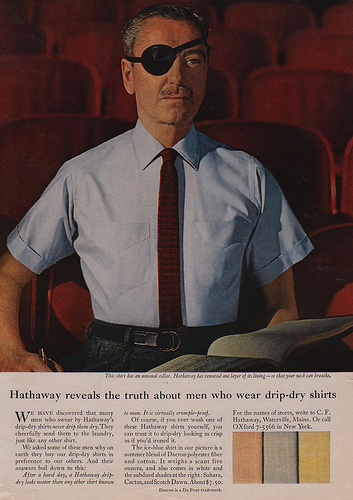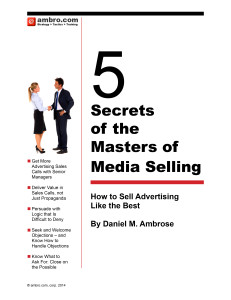There are two key problems to be solved by advertisers. First, and hardest, is how to create engaging and effective advertising messages. Second, the easiest, is how to place those messages where they have the opportunity to communicate.
Creating engaging and effective advertising has always been hard. Going back to the golden age of print, many ads were created, many ads run, but few generated the genuinely high ROI that comes from great creative that engages and sells. Some are engaging and don’t sell. Others are too boring, or too self-centered, to do more than return their cost in increase sales. What advertisers want is the high ROI that comes from great creative like “The Hathaway Man” in print, or “Plop, plop, fiz, fiz” for Alka Seltzer on TV.
or “Plop, plop, fiz, fiz” for Alka Seltzer on TV.
But in the marketing world of 2013, creative that works in one medium may not reach enough of the target audience effectively. With shorter attention-spans, and so many attention-demanding media, achieving engagement with the creative is tougher than ever.
Clients are finding that an industrialized – assembly line – approach may make more creative but not more effectiveness. Just like more movies from a studio doesn’t mean more movies that are successful, there is a limited about of great creative talent to make great advertising.
Advertisers have turned to many solutions in their never-ending quest for engagement and effectiveness. Crowd-sourced creative, native advertising, social media stunts, and even higher and higher spending on the few media channels where clients feel certain they’ll have an opportunity to engage like the Super Bowl.
But none of the new-fangled marketing channels or services solves that basic problem that it is hard to make great ads, and harder still to make them to work across diverse audiences and environments.
Enter the publisher. No-one knows the audience, and how to engage it, better than a successful content-creator-publisher. More and more advertisers are seeking the help of publishers to help communicate with their market. Publishers can create advertising that will be successful in their market, then publishers can sell audience extension services so they can make sure that the messages will be seen beyond the direct reach of the publishers’ audience. Native advertising with added audience buying like BuzzFeed is one example of this.
This trend can be your friend. In your selling process, show your prospects how much you understand their market, and how you can help them reach it with more services than just “buy an ad.” More and more publishers are building marketing services units that can take the place of agencies, providing more complete solutions for their biggest customers. An investment in readership research like Starch or Readex Research is a good place to start. Readership reports, which can measure either print or online advertising, will help you show your advertisers how well their advertising is working. That can be the first step in offering them added services to customize the ad to your medium and your market or develop a campaign that will make them more successful. This is just one more way to generate new revenue streams and to reach deeper in the advertisers’ pockets.

